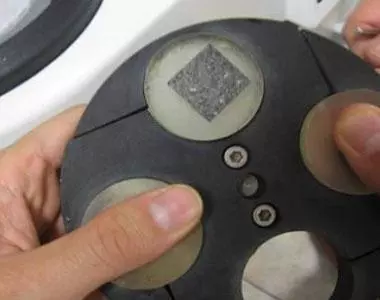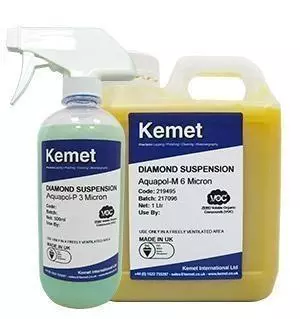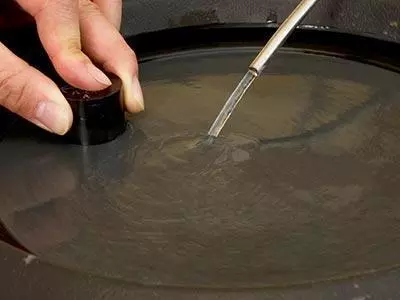Metallography Polishing and Grinding
Metallography polishing and grinding are essential processes in the preparation of metallurgical specimens for microscopic examination. The purpose of these processes is to produce a surface that is flat, scratch-free, and free of deformation so that the microstructure of the specimen can be accurately observed and analyzed.
Polishing metallographic specimens requires careful consideration of the material properties, machinery, and abrasives used. It is essential to practice and have some basic training before attempting to polish metallographic samples. The process of polishing should be approached with care and attention to detail. By following the steps outlined in this guide, you can achieve a high-quality finish on your metallographic samples.
Grinding of Specimens
The first step in the preparation of a metallurgical specimen is grinding. The surface of the specimen is made flat by an abrasive belt or rotary disc machine. These machines are equipped with coolant attachments to ensure cool cutting and to wash abraded particles from the belt or disc. During the rough grinding stage, it is important to take precautions to avoid excessive heating of the specimen.
For wet grinding with abrasive belts or discs, silicon carbide is the most commonly used cutting media. The rough grinding stage typically uses abrasive grit sizes in the 120-320 range to create a flat, planar surface and eliminate damage from previous cutting-off operations. To prevent tearing of grinding papers and polishing cloths in subsequent operations, it's recommended to bevel the sharp edges of the specimen or specimen mount during rough grinding. Applying excessive pressure during rough grinding can result in deep scratches and increase the depth of disturbed metal on the surface of the specimen. This layer of affected metal may extend up to ten to fifty times the scratch produced by the abrasive grain.
The process of reducing the initially deformed layer is continued with finer and finer grinding and polishing abrasives. In the fine grinding stage, the specimen is positioned in a manner that allows the introduction of new, finer scratches at roughly perpendicular angles to the ones created during the rough grinding process. The purpose of this step is to make it easy to recognize the point at which the coarse scratches have been replaced by a series of new finer ones. Fine grinding typically involves using abrasive belts that have grit sizes ranging from 320 to 600. After each grinding stage, it is important to clean the specimen thoroughly using soap and running water to prevent coarse abrasive particles from being transferred to the next specimen.
Maintaining cleanliness is crucial in the preparation of metallurgical specimens and cannot be emphasized enough. Typically, fine grinding involves using a water coolant and silicon carbide abrasive paper that is mounted on a rotating disc. Kemet has a wide range of special diamond and Kemet composite wheels that can often replace the need for silicon carbide discs.
Polishing of Specimens
Smoothing is best carried out by using Kemet diamond compound abrasives or suspensions, in the 3-9 micron size ranges. To achieve a smooth surface, it is recommended to use a nap-free cloth like PSU-M on a rotating disc. To evenly distribute diamond particles over the polishing cloth surface, Kemet diamond compound is usually paired with Kemet lubricating fluids. Diamond abrasives offer cool cutting and produce minimal disturbed metal, even when used with heavy hand pressure or loading. During rough polishing, it's crucial to rotate the specimen in a clockwise direction around the polishing wheel to ensure uniform metal removal across the entire surface, while avoiding excessive polishing in any one direction.
Final Polishing
The process for achieving this involves mechanical methods that follow a similar procedure used for smoothing. For materials that are less critical, Kemet diamond compound with a micron range of 0.25 - 1 can be utilized. Certain materials, especially those that are soft and ductile, require polishing with aluminum oxide. Aluminum oxide is often referred to as alumina and is a popular final polishing abrasive for ferrous and copper-based materials.
Typically, abrasive particles used for final polishing are applied on a cloth that has a napped or short pile surface such as Kemet MRE and Kemet NHM. Kemet offers the option to have their polishing cloths cut to size and applied with an adhesive backing. The use of adhesive backing eliminates the necessity for mechanical clamping.
Pressure Polishing Systems
Polishing systems that utilize pressure can automate the manual method of grinding and polishing described above through the use of a microprocessor controlled power head. This technology offers numerous advantages, such as increased productivity and consistency. The system can be programmed to control key functions including polishing time, pressure, head direction, wheel direction, and fluid dispensing. Additionally, it has the capability to store parameters for a large number of specimens in its memory.
Polishing Metallography Specimens with Diamond Products and Lubricating Fluid
Before starting the polishing process, the metallographic sample needs to be ground on Wet / Dry Met Papers or Bramet to 600 Grit or finer. This initial grinding will help to remove any surface imperfections and prepare the sample for polishing. After grinding, the sample should be thoroughly cleaned to remove any debris or grinding residue.
The first step in the polishing process is to apply Kemet 6-CM Diamond Compound to a suitable cloth such as PSU-M. The compound should be applied evenly on the cloth. The next step involves applying Kemet GW2 lubrication to dampen the cloth. During polishing, small amounts of GW2 should be applied if the cloth starts to dry out. It is also recommended to apply small quantities of 6-CM Diamond Compound to replenish the cutting action. For larger plates or machines with automated dispensing equipment, it is recommended to use Kemet 6-WP Diamond Suspension, as it is already a fluid, and requires less GW2 lubrication.
During the polishing process, the metallographic sample should be pressed firmly against the rotating cloth. The sample should be rotated frequently to ensure even polishing. The pressure applied should be monitored, as excessive pressure can cause damage to the sample. The polishing process should be continued until the desired finish is achieved.
After the first round of polishing, the sample should be thoroughly cleaned to remove any debris or polishing residue. Next, apply Kemet 1-CM Diamond Compound or Kemet 1-WP Diamond Suspension to a new cloth such as PSU-M or NHM cloth. During polishing, small amounts of GW2 should be applied if the cloth starts to dry out. It is important to experiment to determine the best cloth for the sample.
If a better finish is required, finer grades of Kemet Diamond Compound and Diamond Suspension are available. The process of polishing should be repeated using finer abrasives until the desired finish is achieved. It is important to note that the amount of lubrication used should be adjusted depending on the grade of abrasive being used.



